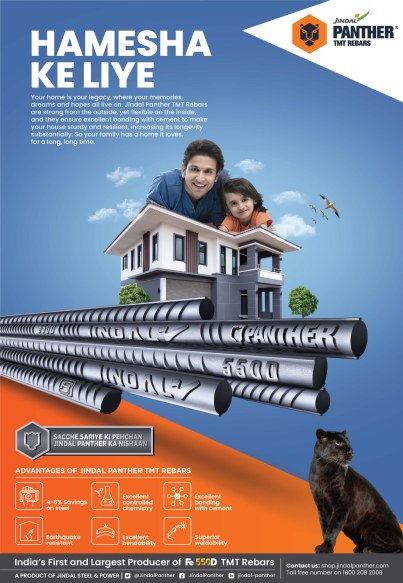Management of Urban Solid Wastes

All nations in the world at present are engaged in improving their socio economic conditions by utilizing various natural resources. In this process, a large number of different kinds of industries and commercial activities have come up. As a result of these, the urban areas as well as their population are increasing at a very fast rate. From domestic and various commercial sources, a lot of solid wastes are being generated and these are mostly responsible for environmental pollution and various health problems in the region and their surroundings. In view of this, it has become essential to properly manage the urban solid waste which is the single largest poluter, by applying best available environment friendly technologies.
The amount of solid wastes generated all over the world, is growing rapidly resulting in more complex problems due to the nature and amount of wastes. For example, the amount of urban solid wastes is growing fastest in China which over took recently the USA as the world’s largest waste generator. It is reported that, the amount of urban wastes generated in the world will rise from the current 1.3 bn tonnes per year to 2.2 bn tonnes by 2025. These wastes both solid and effluents result in a lot of pollution problems and cause huge amounts of health hazards to urban population and also irreparable harm to the vegetation and animal life in the region. The annual cost of solid waste management in the world has been estimated to rise from 205 bn USA dollar ($) to 375 bn $ with the cost increasing more sharply in less developed countries. It is therefore essential that, the best available environmental friendly and economical technologies have to be developed and properly applied in order to manage these wastes satisfactorily. In less developed countries collection of solid wastes and their processing is the single largest budget of the city authority. In order to keep the city healthy, adoption of environment friendly waste management practices is highly essential. It is reported that, in near future with fast changing life system, “the challenges surrounding urban solid wastes are going to be enormous, on a scale if not greater than the challenges we are currently experiencing with climatic change”.
In recent decades, with rapid industrialization and various commercial activities, there has been a mushroom growth of urban areas all over the world. In India, particularly after independence, the growth of urban areas and the shift of a large section of rural population to these areas have been spectacular. The urban population has been consuming various items in much larger quantities than their counter part in rural areas. In the mad rush for having a high standard of living in urban areas and with the migration of large number of rural population in search for employment, the urban areas have not only been crowded with slums but also are being polluted heavily due to release of huge quantities of various types of solid wastes, liquid effluents including the sewage and the pollution of the air with various poisonous gases like oxides of carbon, nitrogen and sulphur specially from transport system and nearby industries.
In urban areas, out of all types of wastes and effluents, the amount and type of solid wastes generated are enormous and complex in nature. The municipal solid wastes include domestic wastes, construction and demolition debris, hospital and sanitation residues, garbage of street and commercial centres etc. With increase in living standard and rising population in urban areas, these solid wastes are being piled up with very unsatisfactory disposal practices. In the year 1947, the Indian cities and towns have generated about 6 million tones (MT) of solid wastes, and these have increased to 48 MT within a period of 50 years. At present more than 25% of the total amount of municipal solid wastes is not collected and nearly 70% of the urban areas have unsatisfactory and inadequate capacity to transport and dispose these wastes. Further, the existing land fill practices in most of the urban areas are unscientific and inadequate resulting in contamination of soil, water and air as well as the ground water.
The primary steps involved in management of wastes are collection, sorting and separation, transfer and disposal. Necessary steps have to be taken to collect all types of solid wastes in urban areas in different localities and transport the materials to a centralized place where the organic matters, recyclable materials like plastic, glass, ceramic, metallic scraps and the building and roads debris can be separated out into mainly three fractions. Separating different types of waste materials is very important. After separating out the wastes into three fractions, the recyclable materials should be sold to the respective industries, the organic fraction has to be processed for composting and fuel generation through aerobic or anaerobic digestion and the rest fraction should be used for land filling as such or after incineration if the hazardous materials are present.
Technology Choices for Waste Management
- Cost-Effective Collection Method
The urban solid waste collection system consumes a good portion of the expenditure for waste management as it is a labour, fuel and vehicle intensive and also has to be repeated daily. In countries like India, the procedure for collection of wastes as well as the cost are much more than those in developed countries. To make the collection method cost effective one has to look into various alternatives like analysis of alternatives, cost for labor, equipment, fuel, civil works, land etc. In order to make the collection less costly, the urban residents should voluntarily collect their own wastes and deposit those in bin containers located by municipal authorities at their nearest sites. The door to door collection system by pushcart or any other similar carrier, would be more expensive. This system can be more effective if the people are ready to pay a little more.
- Selection of Proper Collection System
A particular urban area should be divided in to a number of sub areas. In each sub area, a number of smaller vehicles can be used for collecting the solid wastes deposited by individual houses from place to place and then these vehicles can transfer the wastes to a larger vehicle at a suitable site which would ultimately transport the wastes to the final disposal site.
- Land Disposal
The non-compostable wastes like building and road construction debris as well as ashes from incineration of wastes, can be suitably used for land filling using sanitary landfill techniques. This can be done after separating out the recyclable materials which are ultimately to be sold to the respective industries and the organic materials which can be utilized for composting.
- Maximize efforts towards Resource Recovery
Most of the cost for solid waste disposal can be recovered by selling the recyclable materials (about 18% of the total wastes) to the respective industries and utilizing the organic wastes for composting as well as recovering the fuel value through anaerobic digestion in a centralized manner. The compost as well as the fuel gas can be sold to the respective customers.
- Involvement of Stakeholders related to Waste Management
The siting of land for transfer station, landfill, incinerator, composting and biogas generator etc. are very important for urban waste disposal and it is generally opposed by the people living in nearby areas. In this case, the cooperation of the affected people should be obtained to undertake the urban waste management programmes by giving jobs and providing other incentives to them. It would be preferable to select the waste disposal sites which are away from the residential and farming lands as well as water bodies, roads etc.
In urban India particularly in densely populated areas, the burning of wastes containing plastic bags and other materials are highly health hazard due to production of very toxic fumes such as furans and dioxins. Burning of organic wastes in general highly harmful to the environment as this is the major source of green house gases contributing immensely to global climate change and hazardous to health of people.
The best system to manage the urban solid wastes should be to streamline the collection, transportation and treatment of the wastes by adopting modern technology. At first, the recyclable wastes like metal scraps, plastics, rubber, glasses etc. should be separated and sold to the respective industries. Then, the organic waste should be separated out for utilizing in anaerobic digestion for producing fuel gas as well as compost and the rest residue has to be utilized for land filling in a scientific manner.
The waste processing facility for every urban area should be away from habitation, roads and water bodies. If urban wastes management is carried out scientifically as mentioned above, most of the cost can be realized from selling the recyclable materials to the respective industries, compost to the farmers and fuel gas to the urban dwellers for power generation or domestic fuel purposes. These programmes can be successful with full cooperation between the public and the local government and in this regard the former should be educated about the benefits they can derive from this.
(The writer is Ex-Director General, CSIR. He is at present the Chairman of Institute of Advance Technology & Environmental Studies (IATES). He can be reached at prof.pkjena_iates@yahoo.com)






